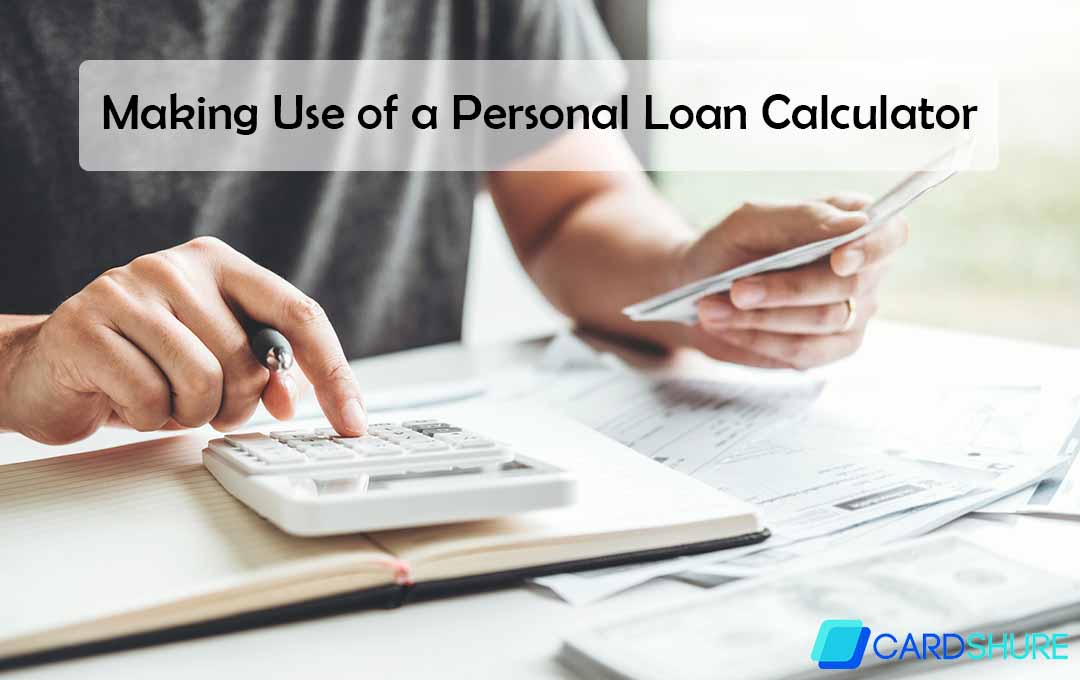The personal Load EMI calculator is an online tool that you use to calculate the EMI amount a borrower has to pay every month in other to replay the load. In other to make use of the personal loan calculator, enter a few details about the loan, which include the following.
- Loan Amount: How much cash would you Like to Borrow
- Loan Term: Just How much time will you have to pay back the loan
- Interest Rate: How much the lender would charge you to borrow the money, expressed as a percentage of the loan.
Personal Loan Calculator
Once your load details have been entered, the personal loan calculator will show three numbers, meaning you can use it to evaluate and compare various loans. Here is what the numbers mean.
Total Interest Paid
The total interest that you would pay over the period of the load. Borrowers with much higher credit scores typically pay less interest overall compared to those with poor credit.
Total Paid
The total amount you would be paying to a lender, including the original amount you borrowed – known as the “principal” – plus the interest. This amount would not include any extra fees that your lender might charge.
Monthly Payment
Just how much do you expect to pay each month for the period of the loan term? Part of each payment would be applied to interest, and part would go toward the principal, according to an amortization schedule.
How Is the Interest Calculated on a Personal Loan?
Each of the monthly Payment made by you consists mainly of two parts, they include:
- The interest portion that the lender would receive
- And the Principal portion that pays down your balance
Your Monthly Payment would remain the same for the life of the loan. However, the amounts that would go toward the interest and principal change. This is mainly because, with Amortized loans, the interest portion of the payment made monthly would depend on how much you owe.
When you first receive a loan, the interest on the payments is larger because the balance is larger. As your balance reduces, the interest payment would get smaller – and more of your payment goes toward paying off the loan.
The Monthly interest can be calculated yourself if you prefer or if you are just interested in seeing the math. Below is how:
Calculate The Monthly Interest Rate
First, divide the annual interest rate by the loan term in months. Making use of the details of the loan, divide 15 (The interest rate) by 12 (the loan term in months) to get 1.2%.
Calculate the Monthly Interest Payment
Multiply the result from Step 1 by the loan balance. So, your very first month’s interest payment would be 1.25% x $1,000, or $12.50. The second month would be 1.24% x $922.24, or $11.53, and so on.
Also Read: How Do I Cancel My Credit Card The Right Way – Step by Step…
What Is the Average Interest Rate on a Personal Loan?
The interest rate usually varies by state, lender, and a variety of other factors, which include:
- Credit score
- Income
- Debt-to-income (DTI) ratio
- Credit history
- Loan term
So, what is the average interest rate for a personal loan? That is not so easy for you to pin down because there are tons of factors involved here. Broadly speaking, however, we can choose to break down the average interest rate by loan term and credit score.
The average interest rate for a 24-month personal loan was 9.34% as of August 2020, according to the most recent data that came from the Federal Reserve. Meanwhile, the national average interest rate for a 36-month personal loan is 9.21% at credit unions and 10.28% at banks as of June 2020, according to the national credit union administration.
| Credit Score | Average Interest Rate |
| Excellent (720 – 850) | 12.5% |
| Good (690 – 719) | 15.5% |
| Average (630 – 689) | 19.9% |
| Poor (300 – 629) | 32.0% |
How to Use a Personal Loan Calculator
Our loan calculator entails your monthly payment, total interest paid, and the total paid amount, based on the input that you provide. That detail is really helpful for some reasons:
- You can choose to try different scenarios right before you commit to a loan. Be sure to try out different loan-term lengths to see just how that would affect your monthly payment and your total interest.
- You also can see if the monthly payment fits right into your budget. If the payment is really high, you can try a longer loan term.
- You can choose if you would be willing to pay the whole amount of interest in exchange for the loan. If it is very high, try a shorter loan term.
If making changes to the loan term does not get you the loan that you want, you might be able to lower your loan costs if you:
- Borrow lesser Money
- Shop around with different lenders
- Work on your credit score before choosing to apply for a loan

